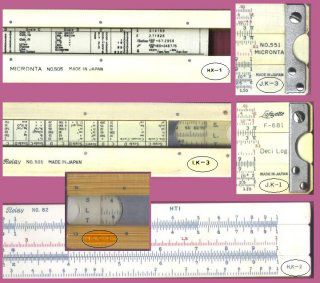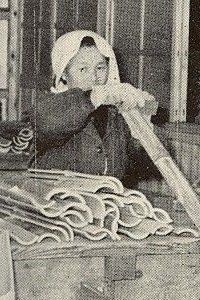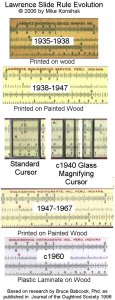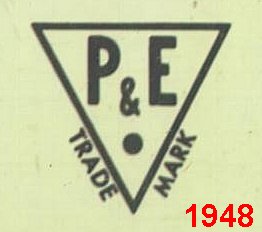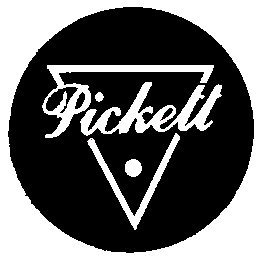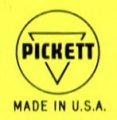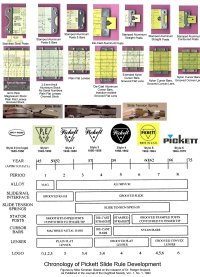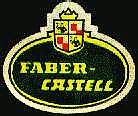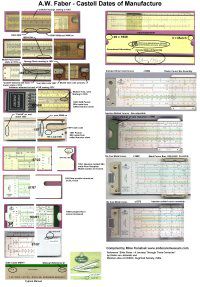History of Hemmi Slide Rule and Misc Japanese Slide Rule dates
The following timelime and history, was taken from a
large general catalog published by Hemmi Slide Rule in 1960 and research by William Lise. Expanded with Patent, logo and cursor data collected by Paul Ross and Ted Hume:
Hemmi Slide Rule Catalogue Raisonne - Determining Dates
1894 - It is believed that the slide rule first came to Japan when
Dr. Ritaro Hirota and Toragoro Kondo, the latter as the Head of the Construction
Section of the Internal Affairs Ministry, visit the US and Europe, and bring a
Mannheim slide rule back with them from France.
1895 - Jiro Hemmi, was working as
a scale divider at the time, began research into manufacturing slide rules,
this representing the beginnings of slide rule manufacturing in Japan.
"Hemmi Jirou & Co." founded. Rules were marked "J. Hemmi" or "Tamaya" (Hemmi's first retailer).
1912 - The basis for founding Hemmi Slide Rule was established. As a
result of a study made of materials, bamboo indigenous to Asia, was selected
as the material, resulting in the granting of patents for a bamboo slide rule
not only in Japan, but in England and France in 1917, and in the US, China,
and Canada in 1920.
5/11/1917 Japanese Patent 22129 for Laminated bamboo construction.
1917 - In December, the SUN mark is established as the Hemmi trademark.
Being the symbol of Japan itself, the image of the rising sun was thought to
bode well for the future of the firm's business.
1917 - British Patent 107562 for laminated bamboo construction.
2/3/1920 - US Patent 1329902 for laminated bamboo construction.
4/5/1920 - Japanese Pat. 51788 for method of attaching glass to cursor. Initially used on metal-framed cursors; later on frameless .
1921 - US import marking requirement changes from "Japan" to "Made in Japan" (but not consistently enforced until ca 1925)..
c1921 - Japanese Patent 58115 .
1923 - Jiro Hemmi proposed a unique mechanical cutting method that enabled the
achievement of excellent scale accuracy, and succeeded in mass production with
uniform quality, this achievement winning wide acclaim.
1925 - Hisashi Okura, later to be president of Hemmi, joined the management
team and succeeded in actively promoting export sales.
c1927 - Model numbering system revised. Models 1-18 dissapear; model numbers above 20 introduced..
1928 - In April, the joint capital company Hemmi Seisakusho & Co. is established. Rules are marked just "Hemmi," no longer "J. Hemmi."
1929 - The invention of the non-logarithmic P and Q scales by Drs. Sadatoshi
Betsumiya and Jisuke Miyazaki was applied to the Japan's first duplex slide rule, which
was sold under the model name of Universal, this product winning wide acclaim.
1929-1945 - Slide rule have "SUN" in quotes.
1931 - Gudermanian scale, Gtheta, introduced.
1933 - In July, Hemmi Seisakusho was reorganized as a stock company, with a
capital of 300,000 yen.
1935 - Director Shinzaburo Ohno was sent to the US and Canada to develop
marketing channels overseas. In December, capital was increased to 500,000 yen,
this to be increased further to 750,000 yen in 1940.
5/4/1937 - US Patent 2079464 for Gudermanian/hyperbolic scale.
1938 - One-time research department head Eimei Hirano proposed the trig
function SI and TI scales.
1940 - The main production facility was constructed in Shirako in Saitama
Prefecture, hereafter to be called the Shirako Factory, on a plot of approximately
40,000 square meters (approximately 425,000 square feet). Jiro Hemmi was honored by
receipt of a government award on the occasion of the 2600th anniversary of the
legendary ascension of the Emperor Jimmu to the throne.
1943 - Hemmi Seisakusho constructs its Matsuyama Factory. Slide rules are
used in Japanese middle school textbooks for the first time.
1945 - The Chichibu Factory is constructed, and production levels increase sharply.
1945-1950 - Rules marked "Made in Occupied Japan."
1946 - The company name is changed to Hemmi Keisanjaku KK (Hemmi Slide Rule).
1950 - Date codes introduced.
1950-51 - The Versalog slide rule is jointly developed with the Frederick Post
company in the US. Standard duplex slide rules are redesigned as the new models
250, 255, 256, and 259, aimed at the US market. The slide rule is again made a compulsory
part of the curriculum in middle schools.
1952 - Jiro Hemmi is honored by receiving a government award. The first edition of
Keisanjaku Report (Slide Rule Report) is issued as the
official publication of Hemmi Slide Rule.
August, 1952 - The manager of the Shirako Factory
is sent to the US to interact closely with Frederick Post, the Hemmi representative, in research.
November, 1952 - The Tokyo Chamber of Commerce holds the first Slide Rule Competition,
an event which is to be held once each year.
1953 - Jiro Hemmi dies, and is posthumously presented by the government with an award
for his achievements.
August, 1954 - The president of Richardson & Company, the Hemmi Hong Kong
representative visited Japan to discuss expanding the business.
1954 - In October, Alfred F. Kunz of Siber Hegner Co., Ltd., Zurich, the Hemmi
representative in Switzerland visits Japan to discuss, among other things, methods of
promoting the slide rule.
1954 - The Japan Chamber of Commerce establishes the Slide Rule Skill Certification
Examination system, the first examination being held in November. The Chamber, with the
backing of the Ministry of Education, holds its first open paper contest, inviting papers
from middle school teachers on the theme of their methods of teaching the use of the slide rule.
1954 - Director Okura becomes a managing director.
1955 - Director Norio Matsumoto becomes the head of the Shirako Factory.
Improvements are made in both quality and production levels. A proposed new two-story
factory building, with environmental control (reinforced concrete construction) is built
(approximately 1400 square meters (15,000 square feet)).
November, 1954 - R. J. Piehl, president of Frederick Post Co., visits Japan to
discuss a plan for expanded business.
1956 - The 60th anniversary of founding is held, with awards given to personnel
who had made contributions related to the slide rule. Developmental History of the
Slide Rule is published to mark this event.
1956 - The Kinki District Slide Rule Education Association is formed by a large number
of teachers directly involved in teaching.
1956 - The sales department is moved to Konnocho in Tokyo's Shibuya Ward, and capital
is increased to 75 million yen.
May, 1956 - O. M. De Leon, the president of Hemmi's representative (De Leon Import &
Export Co., Manila) in the Phillipines, visits Japan for the third time.
July, 1956 - A. Richardson (Mr. K. M. (Aub) Richardson), sales manager of Hemmi's
Australian representative, E. Esdaile & Sons Pty Ltd., Sydney, visits Japan to
discuss the Australian market.
1957 - Seiichi Matsunaga, director and head of sales, visits the US and Canada on a fact-finding mission.
1957 - With the backing of the Ministry of Education and the Japan Association for Mathematics
Education, the second open paper contest, inviting papers from teachers on the theme of
their methods of teaching how to establish the decimal point position.
1957 - The Kyushu Area Slide Rule Education Association is established, followed by founding of
the Tokyo Slide Rule Education Association and the Shikoku Slide Rule Education Association.
All of these organizations issued a publication called Slide Rule Education.
January, 1958 - The First Japanese Slide Rule Skill Certification Examination is held,
with the backing of the Japan Chamber of Commerce and Hemmi Slide Rule, this resulting in
a sharp increase in public awareness of the slide rule.
March,1958 - C. H. Rayner, president of Berrick Brothers Ltd., London, the English
representative of Hemmi visits Japan to discuss advertising and the prospects for the future.
July, 1958 - Mrs. E A. Esdaile of Hemmi's Australian representative, E. Esdaile & Sons Pty Ltd.,
Sydney, visits Japan for talks about expanding the business in that market.
October. 1958 - Hemmi introduces the newly designed Model 2664S 10-inch slide rule,
targeted for use in slide rule competitions and certification examinations. This slide
rule uses a light green scale, a first in Japanese slide rules.
January, 1959 - The Model P23 (7-inch) slide rule, a new style of slide rule for
student use, is introduced, using plastic as a material for the first time.
January, 1959 - 18th issue of the weekly Yomiuri Shukan recommends bamboo slide rules
made by Hemmi, classed as a top Japanese manufacturer, in a two-page article which
describes the Shirako Factory.
1960 - Hisashi Okura dies.
|

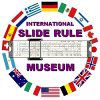

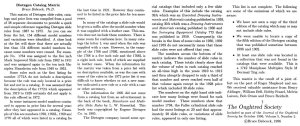
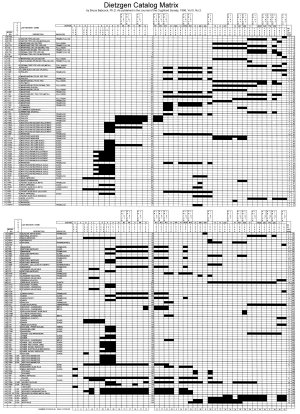

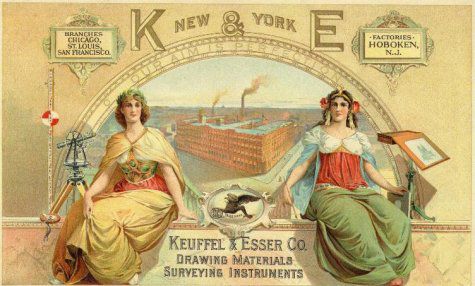
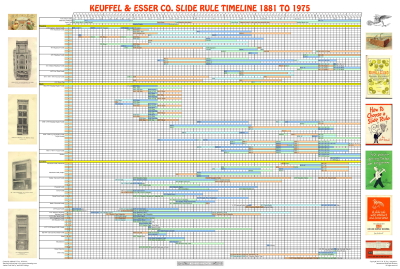

 Time Line for Frederick Post - POST - Teledyne-Post
Time Line for Frederick Post - POST - Teledyne-Post



